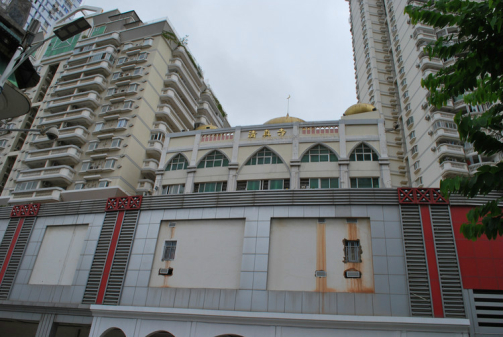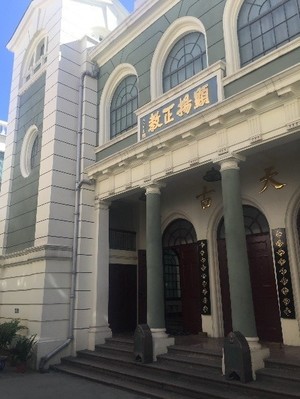ENG
Mosques In China
Xiamen
Beijing Niujie Mosque
No. 88, Niujie Zhonglu, Xicheng District, Beijing
The Niujie Mosque is the oldest mosque in Beijing, China. It was first built in 996 during the Liao Dynasty and was reconstructed as well as enlarged under the Kangxi Emperor (r. 1661–1722) of the Qing Dynasty.[4]
The Mosque is located in the Niujie area of Beijing's Xicheng District, the spiritual centre for the 10,000 Muslims living in the vicinity and it is the biggest and oldest one in Beijing. It was within the Xuanwu District before it merged into Xicheng in 2010. Niujie in Xicheng District, where the mosque is located, is the largest area inhabited by Muslims in Beijing.
The Niujie Mosque covers an area of approximately 10,000 square meters. The mosque reflects a mixture of Islamic and Han Chinese cultural and architectural influences. From the outside, its architecture shows traditional Chinese influence and the inside has blend of Islamic calligraphy and Chinese design. The main prayer hall is 600 square meters in area, and can hold more than 1,000 worshipers. The mosque, built out of timber, is home to some important cultural relics and tablets such as the upright tablet of an emperor's decree proclaimed in 1694 during the Qing Dynasty.
The Mosque is located in the Niujie area of Beijing's Xicheng District, the spiritual centre for the 10,000 Muslims living in the vicinity and it is the biggest and oldest one in Beijing. It was within the Xuanwu District before it merged into Xicheng in 2010. Niujie in Xicheng District, where the mosque is located, is the largest area inhabited by Muslims in Beijing.
The Niujie Mosque covers an area of approximately 10,000 square meters. The mosque reflects a mixture of Islamic and Han Chinese cultural and architectural influences. From the outside, its architecture shows traditional Chinese influence and the inside has blend of Islamic calligraphy and Chinese design. The main prayer hall is 600 square meters in area, and can hold more than 1,000 worshipers. The mosque, built out of timber, is home to some important cultural relics and tablets such as the upright tablet of an emperor's decree proclaimed in 1694 during the Qing Dynasty.
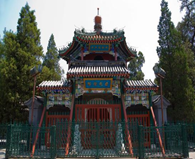
Guilin Xixiang Mosque
Address: Xixiang, Zhengyang Road, Guilin
Originally built in 1907, Xixiang Mosque is also called Northeast Mosque. Xixiang Mosque was once the personal property of businessman Ma Rongxi on Shuidongmen Street in Guilin, who donated it to build a mosque. Xixiang Mosque covers an area of about 333 square meters, all the former buildings of which were burned by Japanese army when Guilin was occupied. In 1947, Muslims in Guilin donated money and Xixiang Mosque was finally rebuilt on its original site. The new Xixiang Mosque contains two yards. Entering the main gate, on both sides are dormitories. Passing the atrium, a two-floor building can be seen. The prayer hall is set on the second floor and the lecture halls on the ground floor. On top facing the prayer hall is an octagonal acute arch. Glass windows are set on both side of the main hall, and the ground is brushed with vermeil paint, clean and spacious, making it an ideal place to pray. Over the building are the backyard and the water house. At present, there are about 1500 Muslims living in the community of Xixiang Mosque, of whom are Hui Ethnic group.
Haikou Mosque
Address: Crossroad of Kunnan Road and Fengxiang Road, Haikou
During the Sui (581-618) and Tang (618-907) dynasties, Muslims from Arab countries in the Middle east started the trade route between China and Middle East which later became known as the Marin Silk Road. They reached present day Guangzhou and Quanzhou. Due to its strategic location, Hainan Island became an important depot where ships from Arabic countries would stop and get water and necessary food. There once was a Persian village at Lingshuiwan near Sanya. Currently there are tomb stones with Arabic letters on the beach of Lingshuiwan. Those tomb stones are about 63 center meter high. As a matter of fact, there are four Muslim cemeteries in Hainai Island for those early Muslim traders. It is said that Muslim traders from India's Gujarat brought Islam to Hainan Island. The city of Sanya has a large Muslim population whom are decedents of Muslims from Southeast Asian countries like Viet Nam and Malaysia. Currently there are over 10,000 Muslims in Hainan province. Haikou Mosque is the only mosque in the provincial capital city of Hainan province.

Sanya North Mosque
Address: Huihui Village, Sanya
Sanya North Mosque is located at Huihui Village. It was constructed at the beginning of Southern Song Dynasty. Sanya North Mosque was destroyed in 1939 the Japanese army and again during the Culture Revolution (1966-1976). The prayer hall of Sanya North Mosque was built in 1981 and renovated in 1993 which can hold up to 1500 people to pray. Sanya North Mosque has a Madrassah, Huimin night school.
Taiyuan Ancient Mosque
Address: No. 7, Jiefang Road, Taiyuan
The mosque was originally called the Qingxiu Mosque and was established in the 8th century during the Tang Dynasty. It then went several renovations and reconstructions after 11th century. The existing building was mainly built during the Ming Dynasty. The mosque has the traditional Chinese architecture style and consists of two courtyards. The main buildings include the gate, prayer hall, sermon hall, decorated archway, ablution hall etc. The prayer hall combines the traditional Chinese, Arabic and Islamic architecture style.
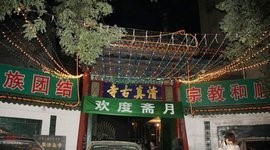
Beijing Nandouya Mosque
Address: No.4, Douban Hutong, Dongcheng District, Beijing
Nandouya Mosque was originally constructed during the Yuan Dynasty. In 2003, the mosque was relocated to its current location which is around 100 meters from its original location due to the development of the city.
The new mosque was constructed with a cost of CNY8 million, collected from the Beijing City Government and donation from local Muslims. The mosque has a capacity of 200 worshipers and spans over an area of 1,600 m2. It was built with orientation facing east and west with an Islamic lintel topped with a crescent moon on top of it.
The new mosque was constructed with a cost of CNY8 million, collected from the Beijing City Government and donation from local Muslims. The mosque has a capacity of 200 worshipers and spans over an area of 1,600 m2. It was built with orientation facing east and west with an Islamic lintel topped with a crescent moon on top of it.

Shanghai Xiaotaoyuan Mosque
X The Xiaotaoyuan Mosque, formerly known as Islamic Western Mosque or Shanghai Western Mosque, is a mosque in Huangpu District, Shanghai, China. It is the largest mosque in Shanghai. The Xiaotaoyuan Mosque was originally built in 1917 by Jin Ziyun, the Director of the Shanghai Islamic Board of Directors, who had bought the land. It was then rebuilt in 1925 and completed two years later in the shape it is today. The site of the mosque was the original site for the Shanghai Islamic Normal School which was later moved to Qinglian Street and renamed Pingliang Islamic Normal School. Other schools established by the mosques were the Islam Normal School, Primary School for Muslims, Mingcheng Primary School, Chongben Primary School, Shanghai Islam Orphanage etc.
After the founding of the People's Republic of China on 1 October 1949, Shanghai Mayor Chen Yi inspected the mosque and approved appropriate funds for its maintenance. On 15 February 1994, the mosque was listed as heritage architecture by the Shanghai Municipal Government.
The mosque was built in the traditional West Asian Islamic style combined with Chinese architecture. The exterior is painted green and white. Above its entrance gate contains the word 'mosque' in Chinese drawn by calligrapher Luo Junti. The main two-story prayer hall can accommodate up to 500 people with a floor area of 500 m2. It is completed with arched windows. The mosque also has one minaret and four domes at the four corners of the mosque.
The mosque is surrounded by a rectangular courtyard. On the east side of the courtyard is a three-story Chinese style-building which houses lecture room, offices, library, reading room, sermon room and ablution facilities. On the south side of the courtyard is the Imam's room, reception room and bathroom. Next to the main mosque building is the Xiaotaoyuan Mosque for women located at 24 Xiaotaoyuan Street.
The building was built in 1920 and renovated in 1994. In 1920-1940, the mosque received and served Muslim people from regions around China who planned to go for Hajj to Saudi Arabia. The mosque is home to the Shanghai Islamic Association which was established in 1962 and also the Management Committee of Mosques in Shanghai. The women's mosque hosts religious activities for Muslim women in Shanghai. Many Chinese and foreign Muslims have gather at the mosque to take part in prayers. Many high ranking government officials and prestigious people from Islamic countries also have visited the mosque and taken part in prayers.
The mosque was built in the traditional West Asian Islamic style combined with Chinese architecture. The exterior is painted green and white. Above its entrance gate contains the word 'mosque' in Chinese drawn by calligrapher Luo Junti. The main two-story prayer hall can accommodate up to 500 people with a floor area of 500 m2. It is completed with arched windows. The mosque also has one minaret and four domes at the four corners of the mosque.
The mosque is surrounded by a rectangular courtyard. On the east side of the courtyard is a three-story Chinese style-building which houses lecture room, offices, library, reading room, sermon room and ablution facilities. On the south side of the courtyard is the Imam's room, reception room and bathroom. Next to the main mosque building is the Xiaotaoyuan Mosque for women located at 24 Xiaotaoyuan Street.
The building was built in 1920 and renovated in 1994. In 1920-1940, the mosque received and served Muslim people from regions around China who planned to go for Hajj to Saudi Arabia. The mosque is home to the Shanghai Islamic Association which was established in 1962 and also the Management Committee of Mosques in Shanghai. The women's mosque hosts religious activities for Muslim women in Shanghai. Many Chinese and foreign Muslims have gather at the mosque to take part in prayers. Many high ranking government officials and prestigious people from Islamic countries also have visited the mosque and taken part in prayers.
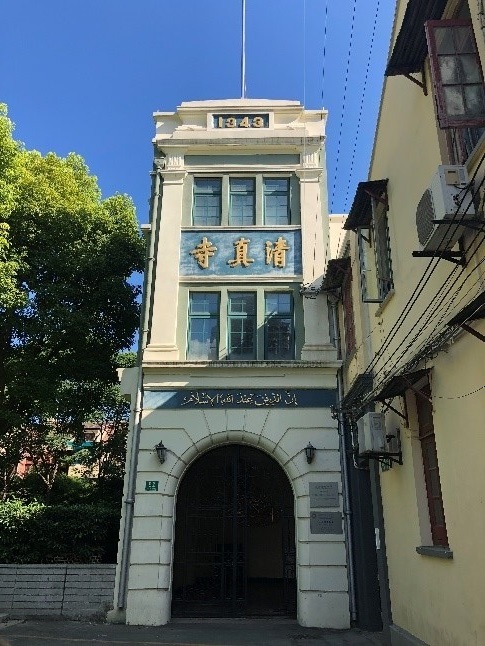
Qingjing Mosque
Qingjing Mosque was constructed in 1009, the Arab style mosque is the oldest of its kind in China. Its area is 2,500 square metres (27,000 sq ft). Many Song dynasty mosques were built in this Arabian style in coastal cities, due to communities of Arab merchants living in them. The entrance of Quanzhou Qingjing Mosque is the only example of stone entrances in mainland China. The inscriptions of the Quanzhou Qingjing mosque was dominated by the Arabic language.
Shadian Grand Mosque
Grand Mosque of Shadian was originally built in the year of 1684. After several restorations and reconstructions, the new Grand Mosque of Shadian is built into a large-scaled mosque with a construction area of 18,000 square meters. It can hold 10,000 people to do prayers at one time. Grand Mosque of Shadian is consisted by main buildings of prayer hall, vault and four minarets.
This grand mosque has inherited the decoration style for its galleries, arches and pillars from Nabawi Mosque in Medina, Saudi Arabia. What attracts most of this mosque is its grand vault which has an inner diameter of 20 meters and a height of 42 meters. In the middle of the vault there is a large dome surrounded by four small domes in the four directions, while at the top of the dome there featured an Islamic styled crescent.
This grand mosque has inherited the decoration style for its galleries, arches and pillars from Nabawi Mosque in Medina, Saudi Arabia. What attracts most of this mosque is its grand vault which has an inner diameter of 20 meters and a height of 42 meters. In the middle of the vault there is a large dome surrounded by four small domes in the four directions, while at the top of the dome there featured an Islamic styled crescent.
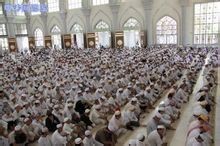
Taipingfang Mosque
The Taipingfang Mosque was built in 1924 and has over 80 years history. After the rebuilt and enlarged, the current mosque covers an area of 650 square meters. The temple still keeps 10 stone steles created in Qing Dynasty(1644-1911) and Ming Dynasty(1368-1644). And this mosque is also the location of Islamic Association of Suzhou. For every Jumat, there will be more than 200 local Muslim coming here to do prayer.

Hangzhou Phoenix Mosque
Phoenix Mosque is a mosque in Hangzhou, Zhejiang, China. It is known for being one of the four great mosques of China. It is also one of the earliest mosques built in China. The origin of this mosque dates back to Tang or Song dynasty.
The Phoenix Mosque had been rebuilt several times. It was firstly destroyed around the end of Song dynasty. During the following Yuan dynasty, the mosque was repaired under the financial assistance of Ala al-Din, an Arab clergyman in China. The minaret of the mosque was removed in 1928 due to the construction of adjacent roads. In 1953, it went through a complete maintenance and repair.
The structure of the main building was heavily influenced by traditional Chinese Architecture while also retaining features of Islamic Architecture. The existing prayer hall was built in the year of 1281 during the rule of Kublai Khan. The mosque is currently receiving a considerable number of visitors from abroad.
The Phoenix Mosque had been rebuilt several times. It was firstly destroyed around the end of Song dynasty. During the following Yuan dynasty, the mosque was repaired under the financial assistance of Ala al-Din, an Arab clergyman in China. The minaret of the mosque was removed in 1928 due to the construction of adjacent roads. In 1953, it went through a complete maintenance and repair.
The structure of the main building was heavily influenced by traditional Chinese Architecture while also retaining features of Islamic Architecture. The existing prayer hall was built in the year of 1281 during the rule of Kublai Khan. The mosque is currently receiving a considerable number of visitors from abroad.
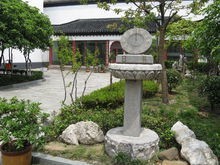
Xiaopiyuan Mosque
Address: Xiaopiyuan, Lianhu District, Xian
Xiaopiyuan Mosque was built in the late of Tang Dynasty(618-907). It is one of the first masques in Xi'an. The mosque’s architecture combines traditional Chinese and Arabic style. It covers an area of 5,986 square meters with an constructed area of 2,032 square meters. The mosque is a four-entrance courtyard. The first entrance is to the female prayer hall. The second entrance is to the imam’s office and classroom. The third entrance is to the meeting room and the forth entrance is to the minaret building.
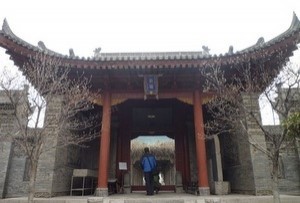
Dapiyuan Mosque
Address: Dapiyuan, Lianhu District, Xian
Dapiyuan Mosque was built in 1411, Qing Dynasty(1644-1911). The current mosque covers an area of about 3,333 square meters with a constructed area of 1,610 square meters. The prayer hall occupies an area of 354 square meters. It is a traditional Chinese style architecture. The mosque is quiet and clean, many old trees could be seen everywhere in the mosque. This mosque serves hundreds of local Muslim households nearby.
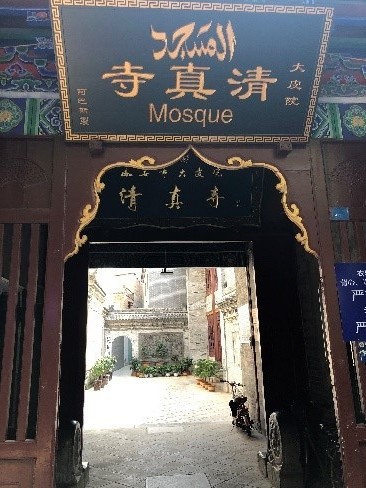
Daxuexi Alley Mosque
Address: Daxuexixiang, Lianhu District, Xian
The Daxuexi Alley mosque is located in Xi’an City in an area inhabited mainly by Chinese Muslim, in the street of West Daxuexi Alley, near the Xi’an Huajue Alley Mosque, the great Mosque, sometimes it is referred to as the Western Xi’an Mosque. In 1956, it was recognized as a Chinese historical heritage. The names of this mosque have varied since its construction. During the Tang and the Some Dynasties, it was known as Tangming Mosque. It became known during the Yuan dynasty as Huihui Wanshan Mosque. The mosque acquired its current name during the reign of Emperor Hong Wu of the Ming dynasty.
The mosque has a long history since its construction during the Tang Dynasty. It was one of six mosques identified on the map of Shaanxi Sheng Cheng Map, which was created and published in 1893 during the era of Emperor Guangxu. Although the map does not include the names of the mosques, by comparison to Google maps reveals that the Daxuexi Alley Mosque is located to the west of the Huajue Alley Mosque.
The mosque has a long history since its construction during the Tang Dynasty. It was one of six mosques identified on the map of Shaanxi Sheng Cheng Map, which was created and published in 1893 during the era of Emperor Guangxu. Although the map does not include the names of the mosques, by comparison to Google maps reveals that the Daxuexi Alley Mosque is located to the west of the Huajue Alley Mosque.
Xi’an Great Mosque
Address: No.30, Huajuexiang, Lianhu District, Xian
The Great Mosque of Xi'an is the largest mosque in China. An active place of worship within Xi'an Muslim Quarter, this courtyard complex is also a popular tourist site. The majority of the mosque was built during the early Ming dynasty. It now houses more than twenty buildings in its five courtyards, and covers 12,000 square metres (130,000 square feet). The mosque is also known as the Huajue Mosque, for its location on 30 Huajue Lane. It is sometimes called the Great Eastern Mosque, as well, because it sits east of another of Xi’an's oldest mosques, Daxuexi Alley Mosque .
The mosque was constructed during the Hongwu reign of the Ming dynasty, with further additions during the Qing dynasty. Previous religious complexes (Tanmingsi and Huihui Wanshansi) are known to have stood on the same site, dating to as early as the Tang dynasty. Islam was introduced to China during the Ming Dynasty in the seventeenth century, but went into full effect during the Qing Dynasty in 1644. When trying to integrate the different groups of people, people would gravitate more towards Chinese tradition due to feelings of superiority. During the 1700s, Muslim freedom of worship was limited, the ritual slaughtering of animals were forbidden, new mosques and the pilgrimage to Mecca was prohibited in the year 1731.
After the Chinese Communist Party won the Chinese Civil War the Mosque was shut down and converted into a steel factory.
In 1956, the mosque was declared a Historical and Cultural Site Protected at the Shaanxi Province Level, and was later promoted to a Major Historical and Cultural Site Protected at the National Level in 1988.
The mosque is still used as a place of worship by Chinese Muslims, primarily Hui people. Just the main hall of the Great Mosque of Xi’an can accommodate 1,000 people yet today a typical service only attracts around 100. The mosque is a walled complex of five courtyards, with the prayer hall located in the fourth courtyard. Each courtyard contains a central monument, such as a gate, and is lined with greenery as well as subsidiary buildings.
The first courtyard, for instance, contains a Qing dynasty monumental gate, while the fourth courtyard houses the Phoenix Pavilion, a hexagonal gazebo. Many walls throughout the complex are filled with inscriptions of birds, plants, objects, and text, both in Chinese and Arabic. Stone steles record repairs to the mosque and feature calligraphic works. In the second courtyard, two steles feature scripts of the calligrapher Mi Fu of the Song dynasty and Dong Qichang, a calligrapher of the Ming dynasty.
The Xingxin Tower is located in the third courtyard, which contains many steles form ancient times. This courtyard is for visitors to attend prayer services. The fourth courtyard has a bigger prayer hall which can seat more than a thousand people.
Overall, the mosque's architecture combines a traditional Chinese architectural form with Islamic functionality. For example, whereas traditional Chinese buildings align along a north–south axis in accordance with feng shui, the mosque is directed west towards Mecca, while still conforming to the axes of the imperial city. Furthermore, calligraphy in both Chinese and Arabic writing appears throughout the complex, sometimes exhibiting a fusion of styles called Sini, referring to Arabic text written in Chinese-influenced script. Some scholars also speculate that the three-story, octagonal pagoda in the third courtyard, called the Shengxinlou or “Examining the Heart Tower,” originally served as the mosque's minaret, used for the call to prayer.
The prayer hall is a monumentally sized timber building with a turquoise hip roof, painted dougong (wooden brackets), a six-pillared portico, and five doors. It is raised upon a large stone platform lined with balustrades. The expansive prayer hall consists of three conjoined buildings, set one behind the other. Interior ornamentation is centered on the rear qibla wall, which has wooden carvings of floral and calligraphic designs.
The mosque was constructed during the Hongwu reign of the Ming dynasty, with further additions during the Qing dynasty. Previous religious complexes (Tanmingsi and Huihui Wanshansi) are known to have stood on the same site, dating to as early as the Tang dynasty. Islam was introduced to China during the Ming Dynasty in the seventeenth century, but went into full effect during the Qing Dynasty in 1644. When trying to integrate the different groups of people, people would gravitate more towards Chinese tradition due to feelings of superiority. During the 1700s, Muslim freedom of worship was limited, the ritual slaughtering of animals were forbidden, new mosques and the pilgrimage to Mecca was prohibited in the year 1731.
After the Chinese Communist Party won the Chinese Civil War the Mosque was shut down and converted into a steel factory.
In 1956, the mosque was declared a Historical and Cultural Site Protected at the Shaanxi Province Level, and was later promoted to a Major Historical and Cultural Site Protected at the National Level in 1988.
The mosque is still used as a place of worship by Chinese Muslims, primarily Hui people. Just the main hall of the Great Mosque of Xi’an can accommodate 1,000 people yet today a typical service only attracts around 100. The mosque is a walled complex of five courtyards, with the prayer hall located in the fourth courtyard. Each courtyard contains a central monument, such as a gate, and is lined with greenery as well as subsidiary buildings.
The first courtyard, for instance, contains a Qing dynasty monumental gate, while the fourth courtyard houses the Phoenix Pavilion, a hexagonal gazebo. Many walls throughout the complex are filled with inscriptions of birds, plants, objects, and text, both in Chinese and Arabic. Stone steles record repairs to the mosque and feature calligraphic works. In the second courtyard, two steles feature scripts of the calligrapher Mi Fu of the Song dynasty and Dong Qichang, a calligrapher of the Ming dynasty.
The Xingxin Tower is located in the third courtyard, which contains many steles form ancient times. This courtyard is for visitors to attend prayer services. The fourth courtyard has a bigger prayer hall which can seat more than a thousand people.
Overall, the mosque's architecture combines a traditional Chinese architectural form with Islamic functionality. For example, whereas traditional Chinese buildings align along a north–south axis in accordance with feng shui, the mosque is directed west towards Mecca, while still conforming to the axes of the imperial city. Furthermore, calligraphy in both Chinese and Arabic writing appears throughout the complex, sometimes exhibiting a fusion of styles called Sini, referring to Arabic text written in Chinese-influenced script. Some scholars also speculate that the three-story, octagonal pagoda in the third courtyard, called the Shengxinlou or “Examining the Heart Tower,” originally served as the mosque's minaret, used for the call to prayer.
The prayer hall is a monumentally sized timber building with a turquoise hip roof, painted dougong (wooden brackets), a six-pillared portico, and five doors. It is raised upon a large stone platform lined with balustrades. The expansive prayer hall consists of three conjoined buildings, set one behind the other. Interior ornamentation is centered on the rear qibla wall, which has wooden carvings of floral and calligraphic designs.

Beijing Dongsi Mosque
Address: No. 13, South Street of Dongsi, Dongcheng District, Beijing
According to local legends, the mosque was built during the Liao dynasty when Beijing was the one of the secondary capitals of the Liao. However, records suggest that the mosque was constructed in 1346 during the Yuan dynasty. The mosque underwent expansion and renovation in 1447 and again in 1486.
The mosque survived a fire in the late 19th century but suffered damage. Comprehensive repairs were done to the mosque throughout the 20th century. The mosque consists of two gates, a minaret, a prayer hall and a library. The prayer hall has Quran carved on the arches of the hall and can accommodate up to 500 worshipers. On the southern part of the courtyard there are five wing halls and on the northern part there are three wing halls. The architectural style of the mosque has features of Ming Dynasty. Located on the southern part of the courtyard, the library has various version of the Quran.
The mosque survived a fire in the late 19th century but suffered damage. Comprehensive repairs were done to the mosque throughout the 20th century. The mosque consists of two gates, a minaret, a prayer hall and a library. The prayer hall has Quran carved on the arches of the hall and can accommodate up to 500 worshipers. On the southern part of the courtyard there are five wing halls and on the northern part there are three wing halls. The architectural style of the mosque has features of Ming Dynasty. Located on the southern part of the courtyard, the library has various version of the Quran.
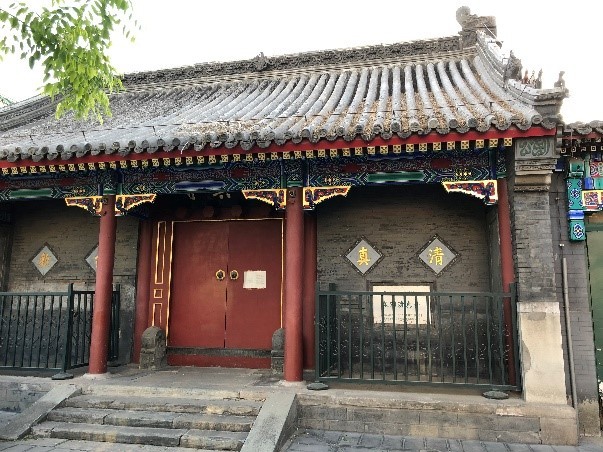
Yongning Najiahu Mosque
Address: Najiahu Village, Yongning County, Ningxia
Najiahu Mosque was built in 1524, and was assigned as the first class cultural protection project. It is in traditional Chinese style located in Najiahu Village, the village itself is a traditional Hui village. The mosque covers an area of 9,000 square meters.
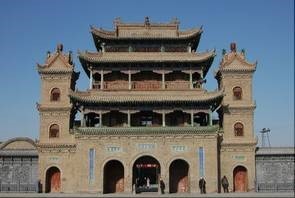
Najiahu Grand Mosque
Address: Yuhuangge Nanjie, Xingqing District, Yinchuan
Najiahu Mosque is situated in Yongning County of Xining and is one of the most famous mosques of Ningxia. The mosque covers a total area of 8,000 square meters and the design and architecture exhibits traditional Chinese architecture and some Arab features. The mosque can hold 1,000 worshippers and is one of the most sacred mosques of Ningxia.
Yinchuan Nanguan Mosque
Address: Yuhuangge North Street, Xingqing District, Yinchuan
Nanguan Mosque is one of the most famous mosques in Yinchuan. Rebuilt in 1981, it occupies an area of 2,074 square meters and has two floors. There will be thousands of people here during every events. The upper floor has a spacious prayer hall and a balcony and the ground floor has a shower room, small prayer hall, women's prayer hall, Arabic language school, offices and reception room. As one of the most important attractions, it has attracted many dignitaries around the world. Nanguan Mosque has a distinct Islamic architectural style characterized by grand domes, arched doors and windows. There are five green domes on the top of this building. The spacious prayer hall on the second floor can accommodate over 1,300 worshipers at a time. There is a fountain in front of the spacious prayer hall, featuring a leaping display of water.
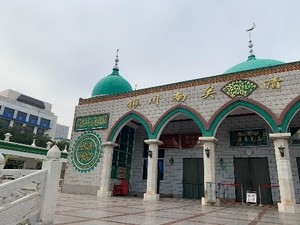


Xiamen Mosque
Address: No. 27, Gongyuan South Road, Xiamen
The Xiamen Mosque was built in 1902, Qing Dynasty(1644-1911). The mosque is in the east and opposite to the west. It is a long rectangle three-entrance courtyard. The first entrance is to the yard. The second entrance is to the hall and wing-rooms. And the third entrance is to the prayer hall.
